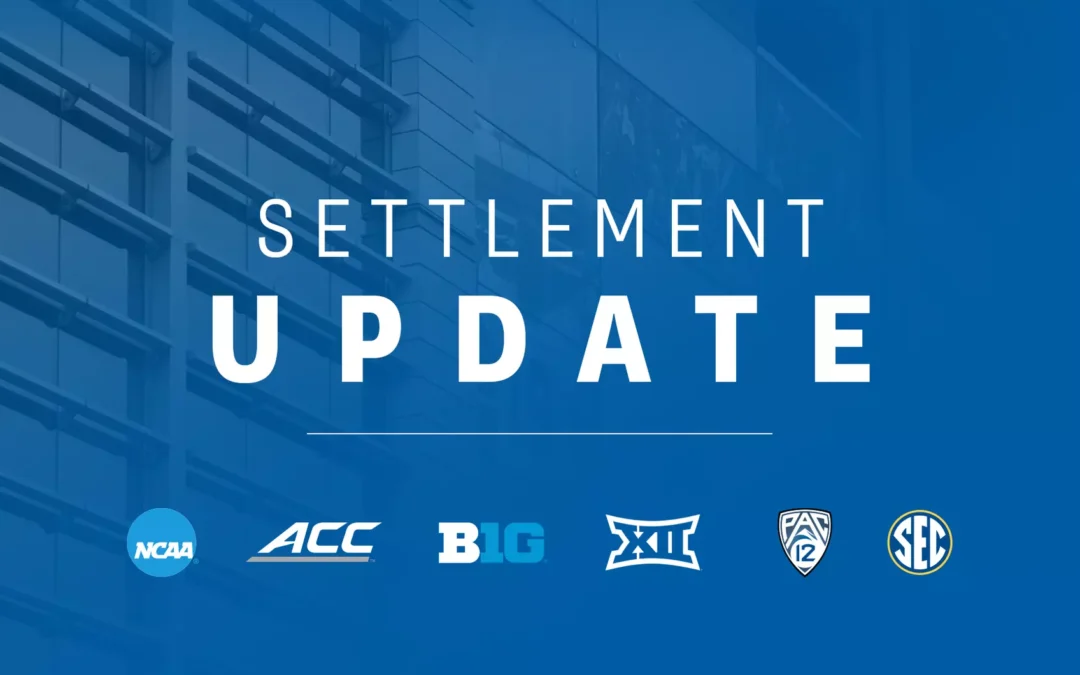Key Takeaways from the House v. NCAA Settlement: The End of Amateurism and the Rise of Revenue Sharing
The House v. NCAA settlement marks a pivotal shift in college sports, moving away from the traditional “amateurism” model toward a new era of revenue sharing and athlete compensation. If approved, this landmark settlement could reshape collegiate athletics, providing athletes with direct payments from their universities and addressing decades of debate over their rights to profit from their name, image, and likeness (NIL). Here are the key details for aspiring collegiate athletes, their parents, and college coaches:
1. Revenue Sharing for Athletes
- Starting in the 2025-26 athletic year, universities will be able to directly pay athletes through a revenue-sharing plan.
- The plan kicks off with about $20.5 million annually, with this amount set to increase each year, based on 22% of Power 5 schools’ average athletic revenue.
- This is a significant change from the previous “amateur” status, where athletes were prohibited from earning money directly from their schools.
2. Back-Pay for Athletes
- Nearly $2.8 billion will be set aside to compensate athletes who were denied the opportunity to earn NIL money since 2016. This back-pay will be distributed over the next decade, primarily benefiting athletes in high-revenue sports like football and men’s basketball.
- Athletes will receive compensation for their contributions to a system that profited immensely from their talents without offering them the ability to earn from their name, image, or likeness.
3. Scholarship and Roster Changes
- The settlement introduces roster limits in place of traditional scholarship limits. Schools can allocate scholarships more flexibly, potentially increasing the number of full or partial scholarships available.
- This flexibility may benefit athletes who were previously on partial scholarships or walk-ons, but it could also reduce spots for non-revenue sports, particularly affecting recruiting for these teams.
4. Impact on NIL Deals
- While NIL deals were previously private, the settlement will create national guidelines, requiring any NIL payment over $600 to be reported to a central clearinghouse managed by Deloitte.
- This move will standardize NIL deals, ensuring greater transparency and creating a more regulated NIL market. Schools may absorb or even close NIL collectives, as athletic departments look to centralize and manage these deals.
5. Financial Adjustments for Schools
- To meet the revenue-sharing obligations, schools will need to find creative ways to fund these payments. Many are increasing ticket prices, raising donations, or adjusting budgets.
- Bigger programs in wealthier conferences (like the Big Ten and SEC) will likely have an easier time meeting the revenue-sharing cap, while smaller programs may face financial challenges.
6. The End of Amateurism in College Sports
- The settlement dismantles the amateurism model that has long governed college athletics, allowing for direct payments and greater athlete compensation.
- This move has the potential to widen the gap between power-conference schools and smaller programs, as the wealthiest institutions can leverage their financial power more easily to recruit and compensate athletes.
7. New Governance and Regulation
- With the NCAA’s role diminishing, a new governing body will oversee NIL deals and the enforcement of revenue-sharing rules.
- Deloitte will assess the fair-market value of NIL deals, and the new body will monitor compliance to ensure schools stay within the revenue-sharing cap, shifting some regulatory responsibilities away from the NCAA.
8. What’s Next for the NCAA?
- While the NCAA’s role in athlete compensation is shrinking, it will still oversee national championships, set playing and administrative rules, and manage academic eligibility.
- The new structure will focus on enforcement and regulation of financial transactions, such as NIL deals and revenue sharing, shifting some of the NCAA’s traditional responsibilities to the newly created governing body.
What Does This Mean for Aspiring Athletes, Parents, and Coaches?
- For Athletes: The end of amateurism means more financial opportunities, with direct payments from schools and increased NIL compensation. Athletes will need to navigate new revenue-sharing systems and potentially more competitive recruiting environments, especially in power-conference schools.
- For Parents: This shift can help ensure financial security for your athlete, as schools will have clear systems in place for compensation. It’s important to stay informed about changes in scholarship limits and NIL opportunities, which could impact your athlete’s college experience.
- For Coaches: The settlement could change recruitment strategies, particularly for non-revenue sports and schools with fewer financial resources. Understanding the new revenue-sharing structure and its implications on scholarships and roster limits will be crucial for maintaining competitive teams.
The House v. NCAA settlement is a game-changer, signaling a new era where college athletes can earn more and benefit from the financial success they help create. As the landscape of college sports evolves, both athletes and programs will need to adapt to this new reality of revenue sharing and NIL compensation.
Photo Credit: NCAA

